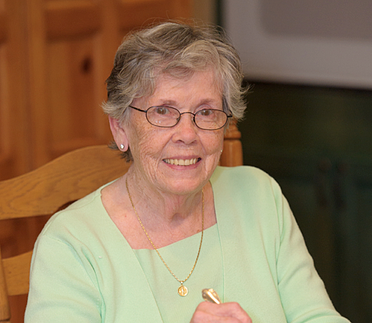 Did you know that individuals over the age of 65 who remove cataracts from their eyes, significantly lower their risk of needing hip replacement surgery? Vision loss is a well-known risk factor for falls and fractures—and while August is Cataract Awareness Month, let’s take a look at the symptoms, risks factors and treatments for cataracts in seniors.
Did you know that individuals over the age of 65 who remove cataracts from their eyes, significantly lower their risk of needing hip replacement surgery? Vision loss is a well-known risk factor for falls and fractures—and while August is Cataract Awareness Month, let’s take a look at the symptoms, risks factors and treatments for cataracts in seniors.
Symptoms of Cataracts
Cataracts are a clouding of the eye lens that leads to partial and sometimes complete vision loss. In the early stages, the effects of cataracts on your vision are mild, but as they progress, symptoms may include:
- Cloudy vision or double vision
- Images may appear yellowish and less vibrant
- Reading may become difficult
- Bright light sensitivities may make it impossible to drive at night
- In advanced cases the pupil takes on a noticeable milky color
Background: The lens we use to see the world is made up mostly of protein and water. By age 40, a loss of elasticity and a hardening of protein force many of us to wear reading glasses to compensate for this change in vision. When the lens, normally crystal-clear, becomes blocked from too much hardening and clumping of protein—cataracts are formed. This is the most common age related reason for vision loss in America.
Risk Factors
Seniors over age 65 are primarily at risk for the disease, but other risk factors are also involved. They are:
- Gender - Women face a higher risk for developing cataracts
- Genetics – The occurrence of cataracts tends to run in families
- Race: African Americans, Caucasians and Hispanics are more susceptible to the disease
- Diabetes
- High usage of steroid medications
- Obesity
- Myopic (near-sighted) individuals
- Smoking
- Chronic alcohol use
- Overexposure to sunlight
Prevention: It is possible to delay the extent of age-related eye deterioration. Here are some prevention tips: quit smoking; maintain moderate sun exposure; wear protective sun glasses; consume a diet rich in dark colored vegetables and fruits (green, purple, red and yellow) including carotenoids recognized for their cataract-reducing properties.
Treatment Options
Most cataracts cause few problems, other than interfering with reading, which is best managed with corrective eye glasses or contact lenses. When prescription glasses are not enough, however, surgery may be required. A senior may need surgery if:
- The Snellen Eye Test reports 20/40 vision or worse due to cataracts
- Performing normal activities becomes difficult and the individual is at risk for injury
A common cause of falls and fractures is a loss of vision. This loss of vision then becomes a loss of independence, requiring seniors to find medical services and rehabilitation assistance to help. Many assisted and independent living communities provide low vision support groups, therapy services, and eye care education programs to help seniors gain victory over the difficulties of low vision and recover their lost independence.
The best way to protect your vision and prevent eye deterioration is to make a commitment to take care of your eyes. This includes visiting your doctor for yearly eye examinations.
Key Takeaways:
- Cataracts are the most common age related reason for vision loss in America.
- Vision loss directly affects balance and contributes to unstable walking patterns; it is a well-known risk factor for falls and fractures.
- Seniors over age 65 are primarily at risk for the disease. Women, African-Americans, Caucasians and Hispanics are at higher risk for cataracts than others.
- To delay the severity of the disease, it helps to: quit smoking; maintain moderate sun exposure; wear protective sun glasses; consume a diet rich in dark colored vegetables and fruits (green, purple, red and yellow) that contain antioxidant rich compounds, including carotenoids recognized for their cataract reducing properties.
- When prescription glasses are not enough and a senior is at risk for falls, surgery may be required.
Assisted and Independent Living
If you would like to learn more about United Methodist Homes Assisted and Independent Living Communities, please visit our website www.umh.org to learn more.






 Did you know that individuals over the age of 65 who remove cataracts from their eyes, significantly lower their risk of needing hip replacement surgery? Vision loss is a well-known risk factor for falls and fractures—and while August is Cataract Awareness Month, let’s take a look at the symptoms, risks factors and treatments for cataracts in seniors.
Did you know that individuals over the age of 65 who remove cataracts from their eyes, significantly lower their risk of needing hip replacement surgery? Vision loss is a well-known risk factor for falls and fractures—and while August is Cataract Awareness Month, let’s take a look at the symptoms, risks factors and treatments for cataracts in seniors.